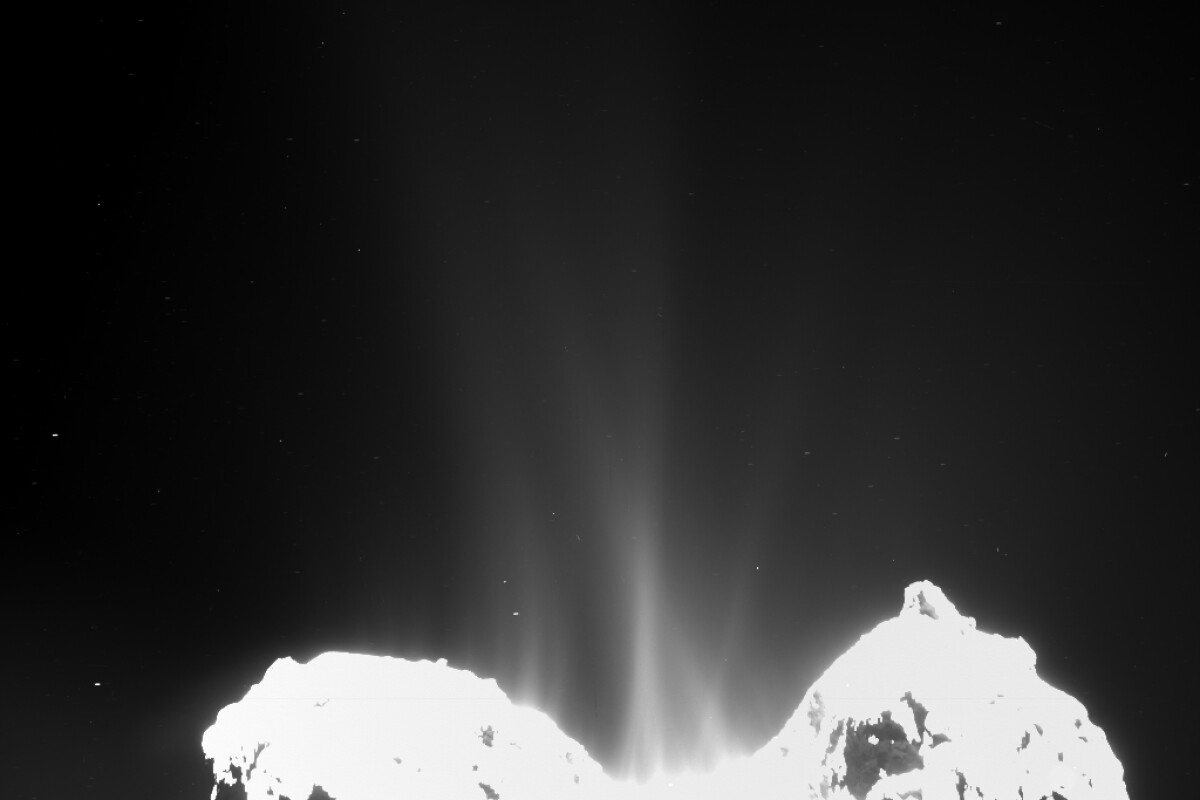Comets may be deep-frozen fossils that could provide clues as to the earliest days of the Solar System, but what does one smell like? Not very nice, says ESA, whose Rosetta space probe has discovered that comet 67P/Churyumov–Gerasimenko (67P/C-G) has the aroma of rotten eggs and horse dung.
The smell of 67P/C-G was uncovered thanks to the Rosetta Orbiter Sensor for Ion and Neutral Analysis (ROSINA), which consists of two mass spectrometers called the Double Focusing Mass Spectrometer (DFMS) and the Reflectron Time of Flight Spectrometer (RTOF) to study the composition of 67P/C-G’s coma, and the Comet Pressure Sensor (COPS) to determine the pressure of the gases in the coma.
The mass spectrometers are designed to cover a wide range of molecules from hydrogen to complex organics. In addition, the pressure sensor can map changes in coma pressure, as well as large differences in ion and neutral gas concentrations, and large changes in ion and gas flux.

The smell of the comet is a bit theoretical because the coma is actually a hard vacuum with trace molecules, but if it could be concentrated, the result would be very unpleasant. Scientists believed that because 67P/C-G is so far from the Sun, only extremely volatile molecules, such as carbon dioxide and carbon monoxide, would be given off. However, Rosetta has discovered an unexpected mix of gases in the comet’s coma. These include mostly water, carbon monoxide, and carbon dioxide, but also:
- Ammonia
It's the sulfur dioxide and the ammonia along with the formaldehyde that give 67P/C-G its bouquet. "The perfume of 67P/C-G is quite strong, with the odor of rotten eggs (hydrogen sulphide), horse stable (ammonia), and the pungent, suffocating odour of formaldehyde" says Kathrin Altwegg, principal investigator for ROSINA. "This is mixed with the faint, bitter, almond-like aroma of hydrogen cyanide. Add some whiff of alcohol (methanol) to this mixture, paired with the vinegar-like aroma of sulphur dioxide and a hint of the sweet aromatic scent of carbon disulphide, and you arrive at the ‘perfume’ of our comet."

Launched in 2004, Rosetta reached 67P/C-G by a circuitous route involving three flybys of Earth, one of Mars, and a long detour out beyond Jupiter as it built up enough speed to catch up to the comet. During this time, it passed close to the asteroids Šteins and Lutetia, and went into a 31-month hibernation to conserve resources until the comet rendezvous. Since its arrival on August 6, the unmanned probe has gone into orbit around the comet and is currently preparing for an historic first landing on its nucleus.
ESA'S says that this discovery is more than just cosmic perfumery. By measuring such gases, astronomers can deduce 67P/C-G's chemical composition, how comets originating in the Kuiper Belt differ from those from the Oort Cloud, and even clues into how life began in the Solar System.
Source: ESA









